Chimpanzees can SPEAK, scientists claim after reviewing ancient footage. Can you hear what these apes are saying?
Many scientists believe that the unique ability to speak is what sets humans apart from their primate relatives.
However, new research suggests that the Planet of the Apes could soon be upon us, as scientists claim that chimpanzees can talk after all.
An international team of scientists has reviewed footage of chimpanzees raised by humans in conditions that would now be considered unethical.
Their analysis of this footage, filmed in 1962, shows that chimpanzees are able to say simple human words, such as “mama.”
This discovery could overturn old assumptions about ape psychology and show that the neural ‘circuitry’ of language evolved earlier than previously thought.
Researchers now believe that chimpanzees (stock photo) and possibly other apes are capable of speaking like humans
The question of whether great apes can talk is a topic that has divided generations of scientists.
Perhaps it is because language plays an important role in our sense of what makes people unique, and that is why there are strong proponents in the debate.
This debate began in the 1900s and culminated in a series of highly unethical experiments where people attempted to raise chimpanzees like humans.
For example, the researchers point to the case of Keith and Catherine Hayes, who adopted and raised a chimpanzee in 1947.
The couple later claimed that the chimpanzee, whom they named Viki, had learned simple words such as “mom,” “smile” and “up.”
However, little direct evidence from these early experiments has survived and because of the trauma associated with separating chimpanzees from their families, the results have been largely dismissed.
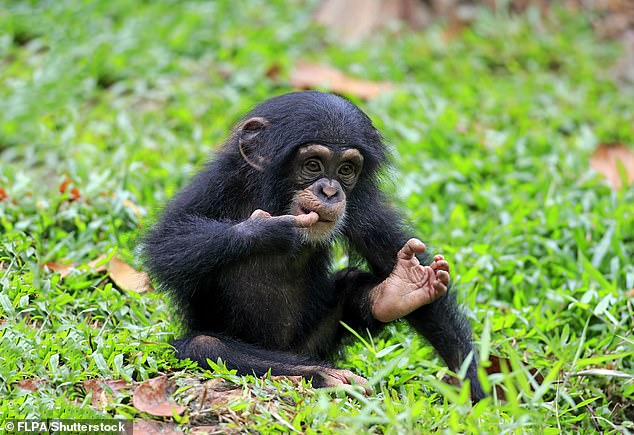
Some scientists believed that chimpanzees lacked the brain circuitry to combine control of the jaw and larynx in a way that could produce speech sounds (stock image)
In their paper, published in Scientific Reports, the researchers argue that a lack of analysis of these older cases has led to the assumption that great apes cannot speak.
Lead researcher Dr Axel Ekström, from the KTH Royal Institute of Technology in Sweden, told MailOnline: ‘There has been a notion in neuroscience for a few years that the chimpanzee cortex might be hindering the development of these animals.’
The basic idea, Dr. Ekström explains, is that in humans, the area of the brain responsible for jaw movement overlaps with the area that controls the larynx.
“The idea was that this overlap unlocks the syllabic speech patterns we see in babies (“ba-ba-ba”) that develop into adult speech patterns,” Dr. Ekström said.
The so-called ‘Kuypers-Jürgens hypothesis’ suggests that because chimpanzees lack this overlap, they simply cannot talk like humans can.
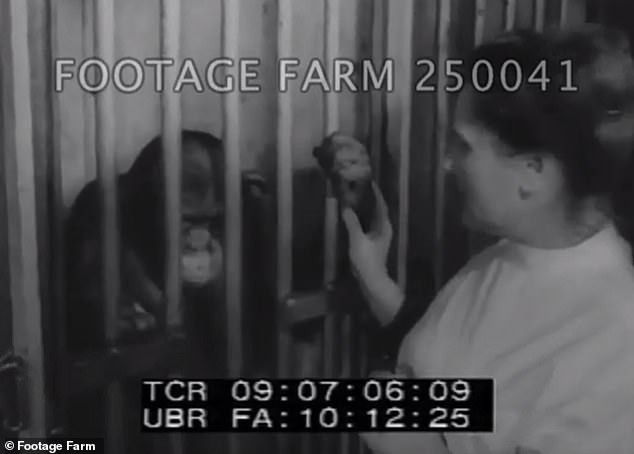
Beginning in the 1900s, some chimpanzees were raised alongside humans in an attempt to teach them language. However, evidence from these older cases has been largely dismissed by scientists. Pictured: A clip from a film titled “Now Hear This! Italians Unveil Talking Chimp,” released in 1962 as part of the Universal Studios news series
By looking back at old footage of chimpanzees raised around humans, Dr. Ekström and his colleagues believe they have found good evidence against this idea.
In particular, the researchers discovered two videos of chimpanzees that appear to be able to say “mama.”
The first shows a chimpanzee named Johnny who lived at the Suncoast Primate Sanctuary in Palm Harbor, Florida.
In the comments of the video, the original poster wrote: ‘Johnny called everyone Mama. He was an amazing animal and lived to be 63 years old.’
The second video shows a clip from a film titled ‘Now Hear This! Italians Unveil Talking Chimp’, which was released in 1962 as part of the Universal Studios newsreel series.
In the clip, chimpanzee Renata is tapped on the chin by a handler, who seems to be encouraging her to say something that sounds like ‘mama’.
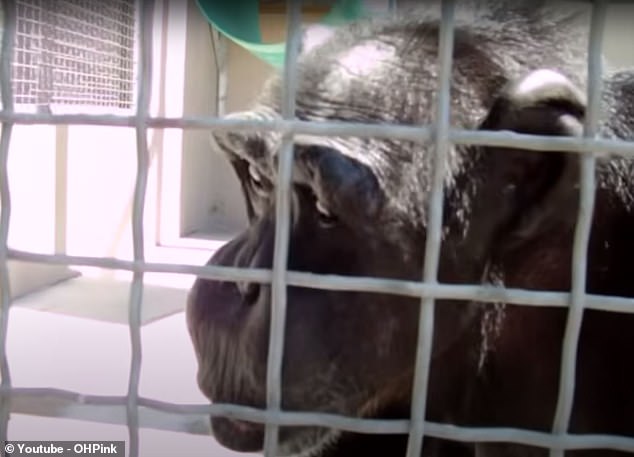
By analyzing the sounds in older videos of captive chimpanzees like Johnny (pictured), the researchers found that the animals are able to produce sounds that closely resemble the word “mama”
To test whether these utterances closely resembled human words, the researchers designed an online listening experiment.
The chimpanzees’ statements were mixed with clips from people diagnosed with Parkinson’s disease.
Participants were told that all fragments were from speakers with speech disorders and were asked to write down phonetically the sounds they heard.
The researchers found that most participants agreed that Johnny and Renata said mom.
Although Renata’s vocalizations were generally clearer, a significant number of participants still recorded Johnny making a sound with an ‘a’ sound.
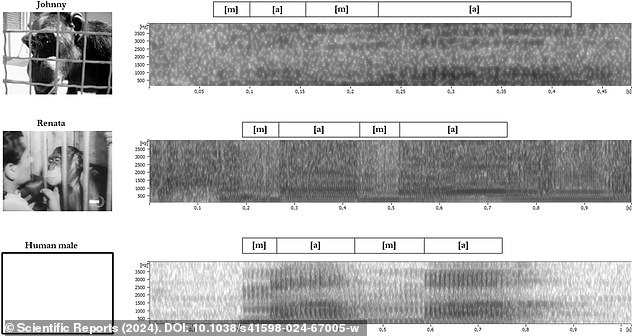
The recordings of two chimpanzees (above) were played alongside recordings of people with Parkinson’s disease. Most participants in a blind listening experiment recorded the monkeys saying “mama”
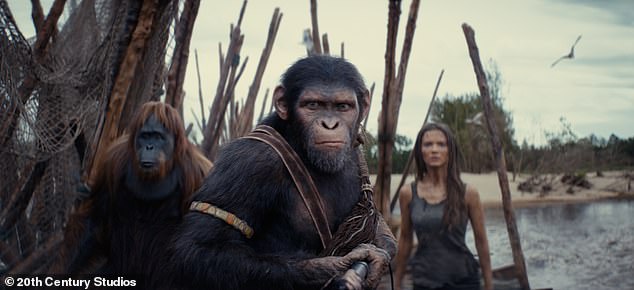
However, the researchers say that apes will not be able to speak as in Kingdom of the Planet of the Apes (pictured), because they are learning to make sounds rather than learning a language with meaning.
The researchers argue that this is clear evidence that chimpanzees do indeed have the jaw-larynx coupling necessary to produce syllabic speech with consonants and vowels.
Dr. Ekström says: ‘The conclusion we can draw from this is that either the cortical overlap is not crucial, or that chimpanzees also have it.’
However, the researchers also point out that it’s unlikely we’ll end up with the kind of talking chimpanzees you might recognize from Planet of the Apes.
Even though chimpanzees have the right brain type to learn new sounds, their tongues are long and flat, making it difficult to switch between speech sounds.
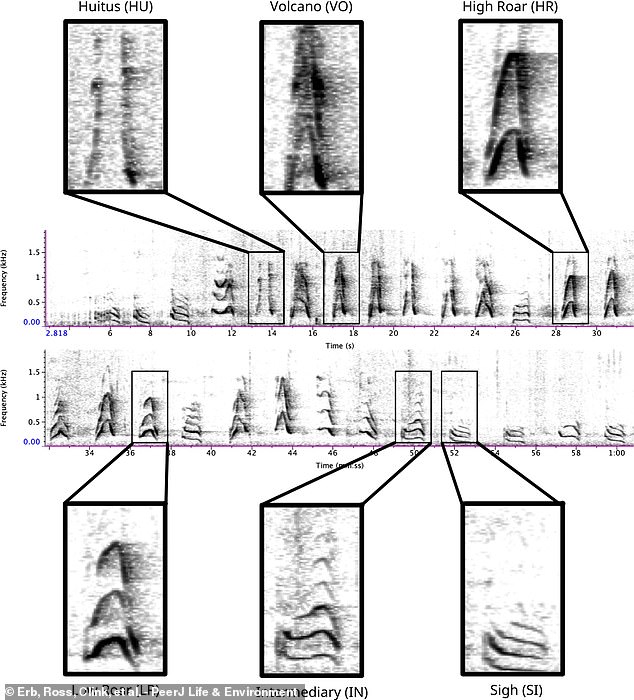
Researchers have argued that several great apes may be capable of language. Recent studies have shown that orangutans have a level of ‘complexity’ in their calls (pictured left) that was not previously expected.
There is also a big difference between learning to hear and repeat sounds and learning to speak a language.
According to Dr. Ekström, his article shows that chimpanzees have this ability, which is also called ‘vocal learning’.
But he adds: ‘In our case, there is no evidence that the chimpanzees understood the ‘sense’ of the word mama.
‘That is, as far as we know, they did not ask for their “mama” or address anyone as “mama.” These were sounds that have deep symbolic meanings for us, but it seems that the chimpanzees were not aware of them.’
